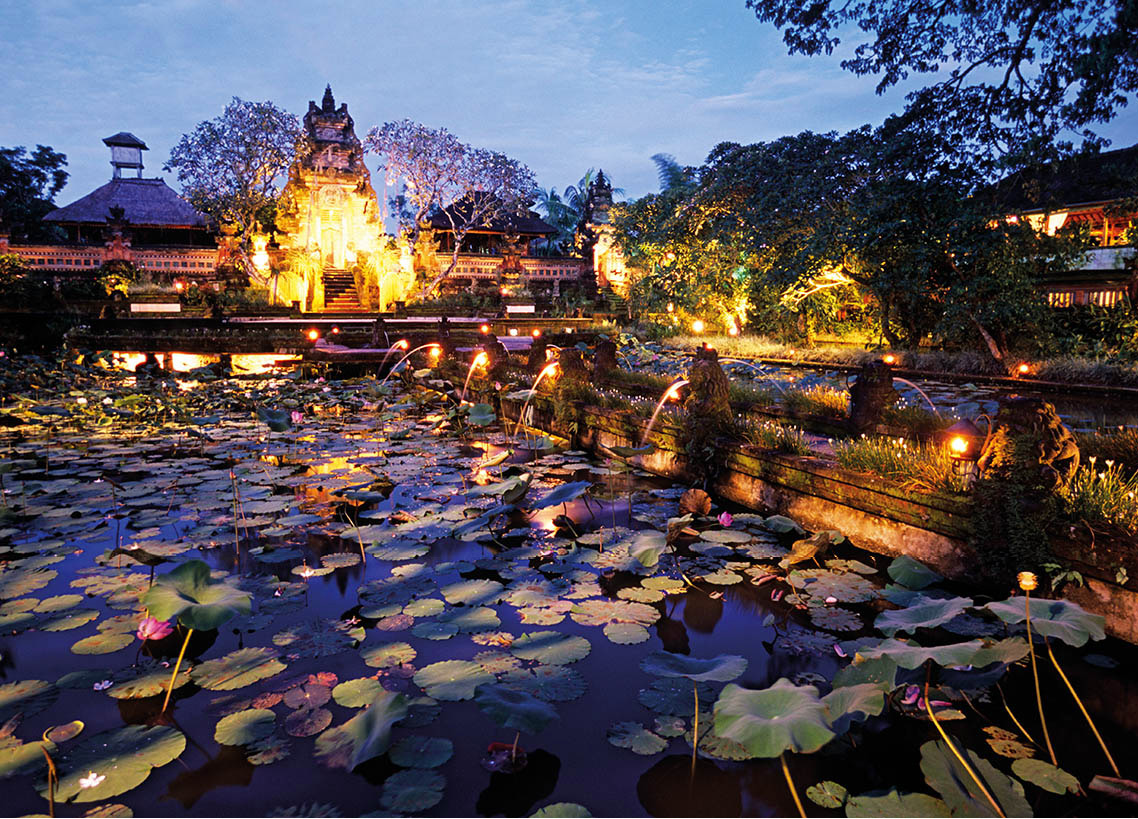South and East Sumatra have never been hugely popular travel destinations due to lack of accessibility and infrastructure. Now, with scheduled flights to major cities and towns, it is becoming easier to get around.
In the east, broad alluvial lowlands no more than 30 metres (100ft) above sea level are drained by numerous meandering rivers, including the Sungai Batanghari, navigable for nearly 500km (300 miles) inland, and the Musi, Sumatra’s longest river. In contrast, the west coast is mountainous, rising to volcanic peaks of more than 3,000 metres (10,000ft) before dropping sharply to the Indian Ocean at the former Dutch and British colonial outpost, Bengkulu. This area is home to five national parks, but only one of them, Way Kambas, has experienced any development to attract tourists. South of Bengkulu is Krui, one of Sumatra’s popular surfing beaches.
Sitting off the eastern coast are Bintan, Batam, Bangka and Belitung islands, the former two part of a ‘golden triangle’ project between Indonesia, Singapore and Malaysia. Bintan’s northern beach is a sprawling complex of resorts and golf courses, while Batam is primarily industrial. Bangka and Belitung are two of the world’s largest tin producers, but as the 17th-century mines are playing out, watch for more resorts to pop up here.
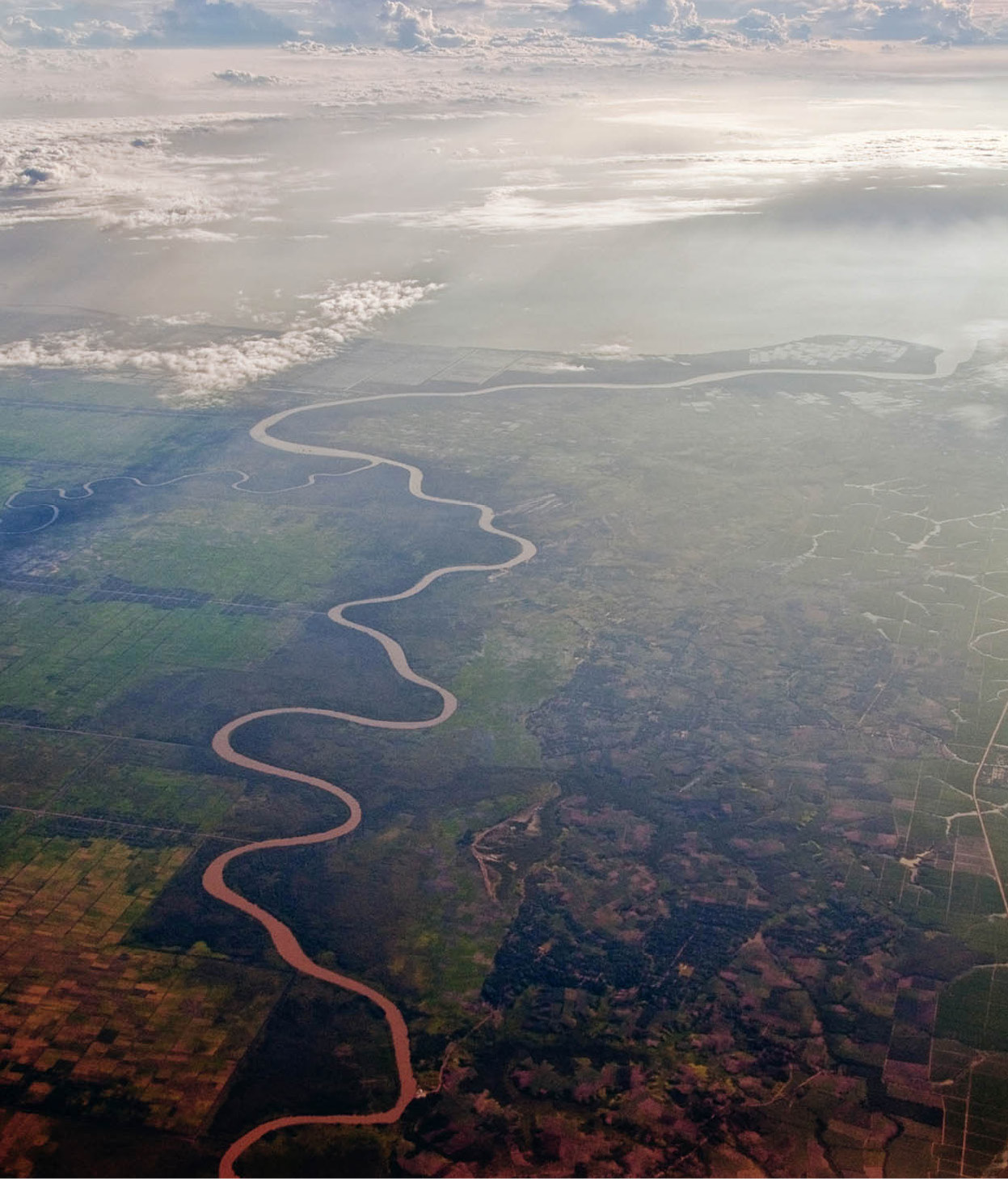
An aerial view of the East Sumatran plains, characterised by slow, meandering rivers and large tracts of forest and swamp.
Getty Images
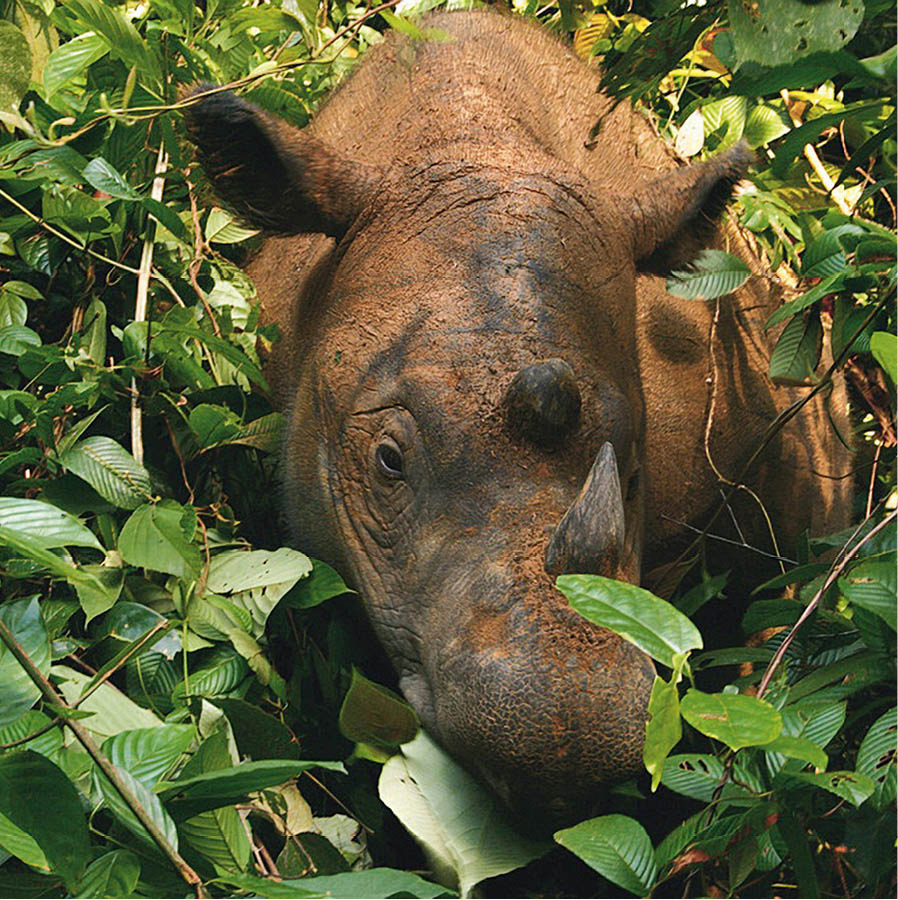
The elusive Sumatran rhino can be seen at Way Kambas National Park.
Willem v Strien
Bengkulu
The seaport of Bengkulu 9 [map], formerly known as Bencoolen, was founded in 1685 by the British. Its fort, Benteng Marlborough, was constructed in 1713–19 and restored in the late 1970s. Old gravestones with English inscriptions can be seen in the gatehouse. Sir Thomas Stamford Raffles was lieutenant-governor of Bengkulu from 1818 to 1823. He introduced coffee and sugar cultivation, established schools and fought a royal decision to hand control of Sumatra over to the Dutch in 1824. His scientific zeal led to the naming of the giant Rafflesia flower in his honour. This can be found at the Dendam Tak Sudah Botanical Gardens near the lake of the same name 8km (5 miles) southeast of town.
East of Bengkulu is Lahat, gateway to the Pasemah highlands. Dotting this mountain plateau are carved megaliths, tombs, pillars and other stone ruins thought to date from about AD 100. They are considered the best examples of prehistoric stone sculptures in Indonesia. Oddly shaped rocks have been fashioned into figures of armed warriors riding elephants, wrestling buffaloes or fighting snakes. There are dolmens, sanctuaries, coloured cave paintings and other works of art around volcanic Gunung Dempo.
Tip
On Jalan Sukarno-Hatta in Bengkulu is the house where Sukarno was held by the Dutch from 1938 to 1941. It is now a museum.
Heading south, near the southern tip of Sumatra, is Krui beach, known among surfers for its brilliant waves. There are several other good beaches here and a choice of accommodation. From Bandar Lampung, it is a 6-hour drive to Krui town.
Tip
Boats can be hired in Canti village, near Bandar Lampung, to make the choppy 3-hour crossing to Anak Krakatau volcano. Krakatau can also be accessed from West Java.
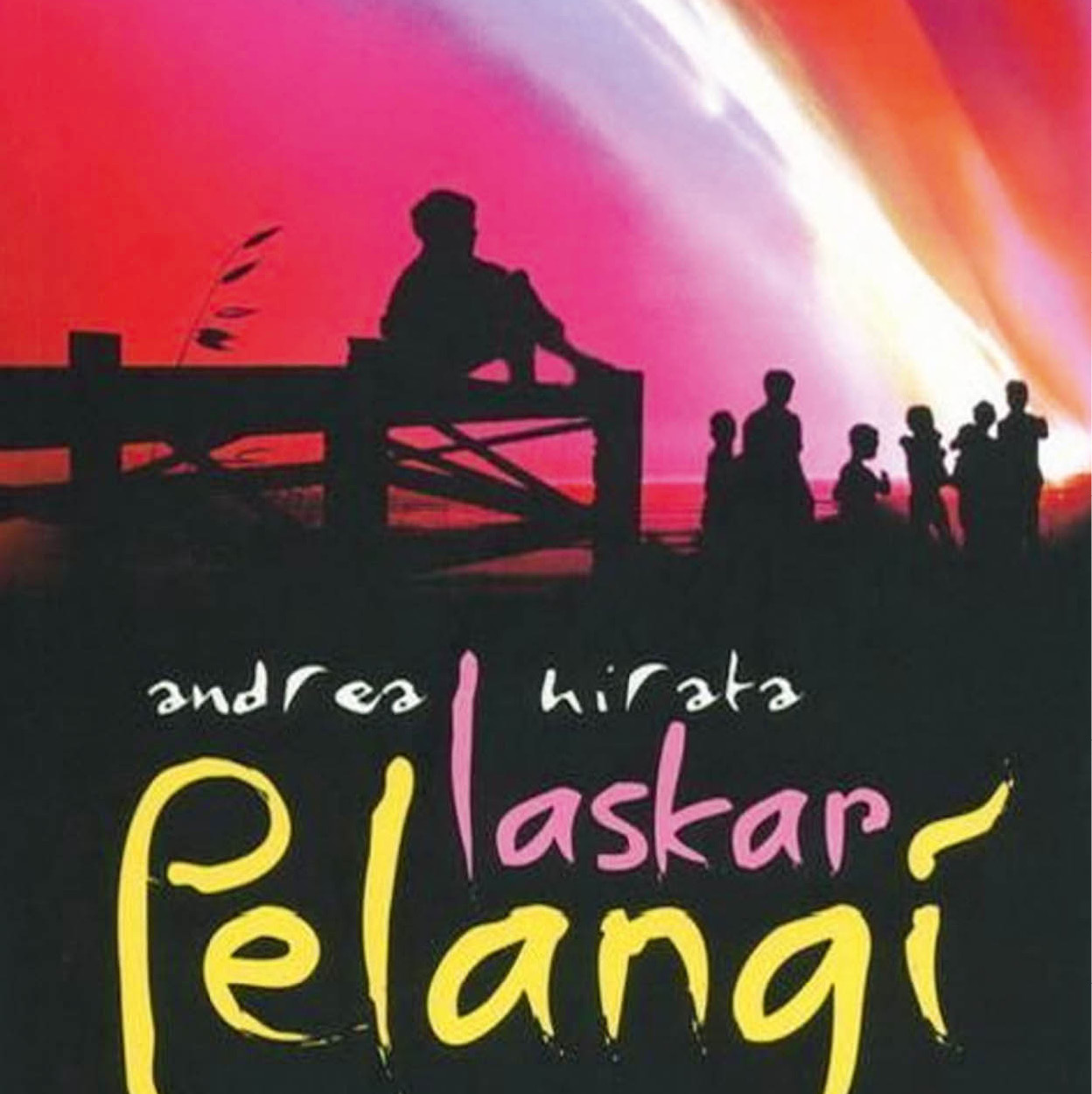
A poster for Laskar Pelangi. The film has helped to establish the fine local beaches on the tourist trail.
Corrie Wingate/Apa Publications
From tin to tourism
Bangka and Belitung islands are the biggest tin producers in Indonesia. Established in the 17th century, their mines are central to the local economy – although as both islands have a number of lovely beaches, the local governments have grand plans for developing tourism. Belitung’s Tanjung Tinggi beach and its extraordinary granite formations along the coast are the most visited. The enormously successful Indonesian film Laskar Pelangi (Rainbow Troops) was shot here, and the movie’s amazing beach scenes have already made it a popular holiday destination among locals. Tasty seafood and coffee shops are found everywhere. On Banka, watch for new resorts on Remodong, Penyusuk, Parai Tenggiri and Tanjung Pesona beaches.
Bandar Lampung
Arriving from West Java, the Sumatran port of entry is Bakauhuni harbour near Bandar Lampung ) [map]. The ferry passes within view of Anak Krakatau, which sits on the site of the former enormous Krakatau volcano that erupted in 1883 (for more information, click here). The Lampung Provincial Museum on Jalan Teuku Umar (Tue–Sun; 9am–4.30pm) displays Chinese ceramics, Dongson bronze kettledrums, kain tapis (hand-woven ceremonial cloths) and archaeological finds from Labuan Meringgai.
There are hot sulphur springs at Kalianda, 38km (23 miles) north of the ferry terminal, where there are hotels and restaurants. Nearby are the remains of an old Dutch fort.
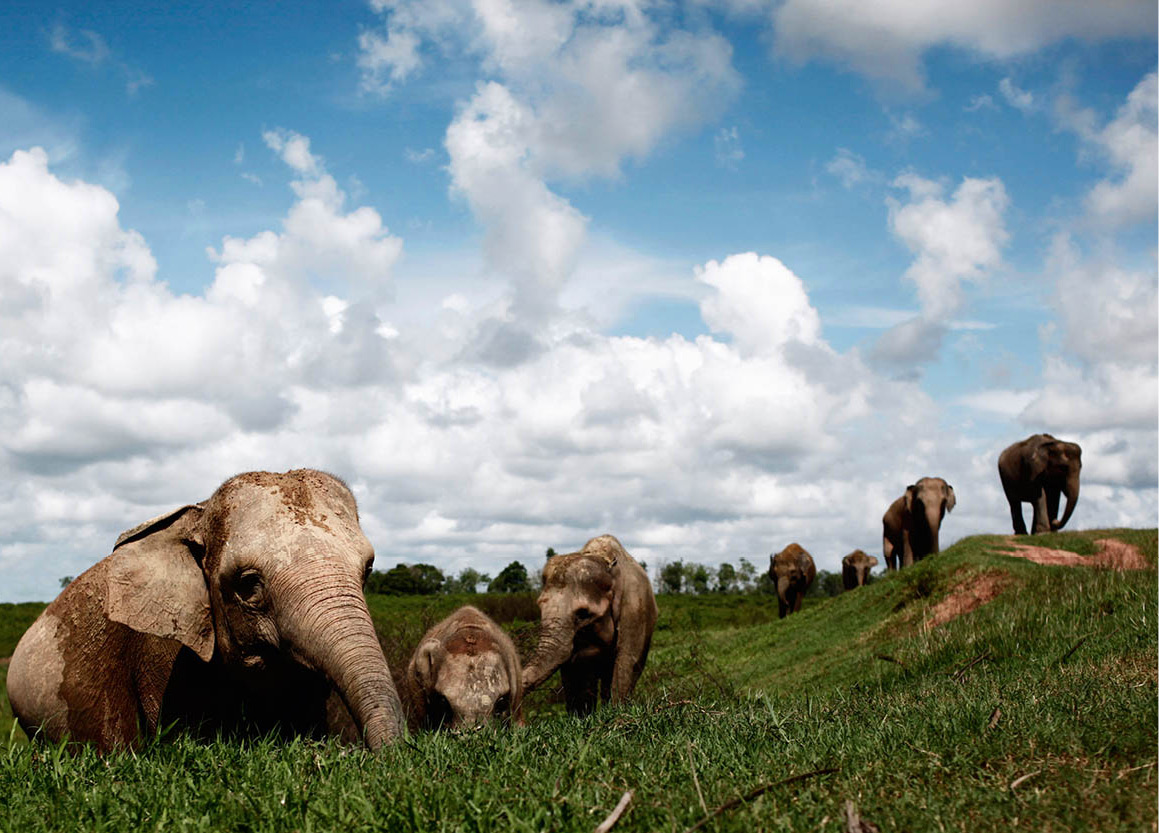
Sumatran elephants.
Getty Images
On Sumatra’s southeast coast, Way Kambas National Park ! [map] comprises estuaries, marshes and open grassland and is the home of the Sumatra Rhino Sanctuary. Recommended is the 4-hour (one-way) boat trip through rainforests from Labuhan Meringgi, 12km (7 miles) south of the reserve, to the Way Kambas estuary, an excellent way to look for wild elephants, tigers and boars that come to the river’s edge to drink. Birdwatching is also spectacular, with resident kingfishers, lesser adjutants, woolly-necked storks and pelicans. The park also houses an Elephant Conservation Centre, where the pachyderms are bred and trained to perform heavy work and to patrol park boundaries. Entertaining tourist shows featuring performing elephants are designed to educate villagers that elephants are not man’s enemies and should be protected.
Palembang
Going north along the east coast, Palembang @ [map], a booming oil town, is Sumatra’s second-largest city and sits on the banks of the mighty Sungai Musi. A major port for well over 1,200 years, Palembang was the capital of the Srivijaya kingdom in AD 600 and a spiritual centre where Mahayana Buddhist monks from as far away as China studied and translated texts.
Palembang was nurtured during the Dutch era as a riverine entrepôt, servicing the mines on Bangka island. Those who love fine beaches, refreshing sea breezes and azure waters can reach Bangka or neighbouring Belitung island by ferry or hydrofoil. Pantai Parai is the most visited beach on Bangka; Belitung’s Pantai Tinggi has amazing rock formations.
Palembang’s ornately carved lima-style houses and shops are raised on piles above the Musi, where river merchants ply their trade from boats. The region produces fine woven fabrics and has its own dances, including the gending srivijaya, dating from the 7th century. The Museum Rumah Bari (Tue–Sat 8am–4pm, Sun 8am–noon), occupying several buildings, contains important megalithic statuary, Hindu and Buddhist sculptures, primitive ethnic crafts, weaponry and Chinese porcelain. An old Dutch fort is still used by the Indonesian army.
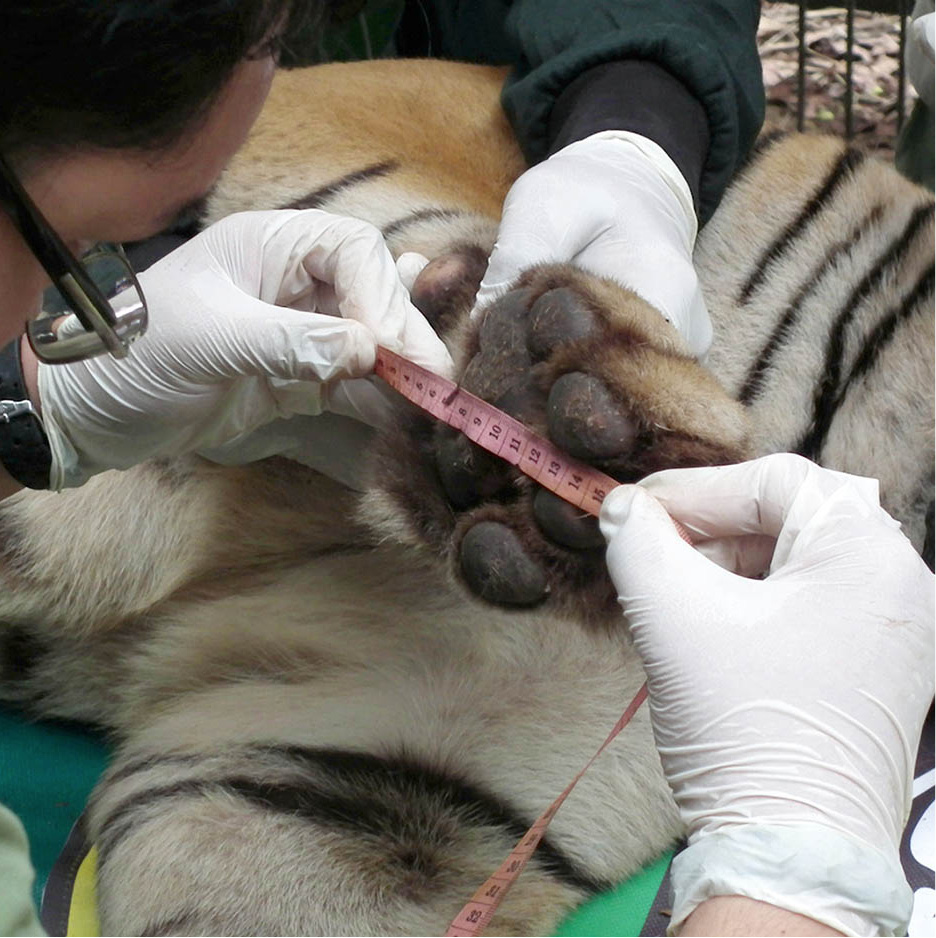
Measuring a Sumatran tiger being tracked at Sembilang National Park. The paw size is a good indicator of the animal’s age and health.
asiapulppaper
West of Bangka, on the east coast of the mainland, is Sembilang National Park, reached by motorboat from Palembang in about 4 hours. Its lack of easy access has prevented large-scale tourism development, which could be a good thing for the tigers, elephants, tapirs, giant tortoises, freshwater dolphins and otters that live there. This park is also excellent for birdwatching, as it is a habitat for migrating birds that come from as far away as Siberia.
At Sembilang’s northern boundary, Berbak National Park is a Ramsar protected wetlands site. It owes its importance to its large, undisturbed swamp forests, criss-crossed by muddy rivers.
Jambi
Further north, Jambi £ [map], the site of the ancient Melayu kingdom, is today a modern city, its growing economy based on palm oil, logging, rubber, coffee and tea exports. The surrounding forests are home to the Kubu people, the original inhabitants of the area who are hunter-gatherers. Clad in loincloths, they can sometimes be seen walking along the roadside en route to their forest homes.
Exploration of the city starts along the river, where a large number of people live on floating rafts or in houses built on stilts over the Sungai Batanghari. You can walk or ride on a dokar (horse-drawn cart), and visit the Pasar Raya (Central Market).
The Hindu temple complex Candi Muaro, 25km (15 miles) northeast of the city, is an hour by car or 30 minutes by speedboat. Accessible by four-wheel-drive along the Sungai Sengering are the 10 stalactite Tiangko Caves.
Relatively small Bukit Duabelas National Park is in Jambi province and consists of lowland tropical rainforest in the northern part, while in the south, the secondary forest is a result of logging. This park is the home of the Rimbu people, hunter-gatherers who live in small groups and are governed by traditional laws.
The Riau archipelago
Between the swampy shores of Sumatra and the Malay peninsula lies a chain of more than 3,000 small islands. These and the eastern mainland Sumatran lowlands comprise Riau province, one of the fastest-growing parts of Indonesia in terms of economics, population and tourist expansion.
Pekanbaru $ [map], the provincial capital and the largest city in mainland Riau, is a thriving oil-production centre. This friendly Caltex oil town, with a large foreign population, is a good base for exploring nearby jungle abodes of the durian-loving Sumatran rhinoceros, as well as tigers, elephants and birds. At Siak Sri Indrapura village, four hours downriver, stands a palace that was built in 1723.
Muara Takus, a temple near the hydroelectric plant, dates from the 9th century AD. It is believed to have been built when the power of the South Sumatra-based Sriwijaya Empire was at its peak.
In this area at the Tesso Nilo National Park, the World Wildlife Fund and Indonesian forestry department operate a Sumatran tiger conservation unit. In a successful community empowerment programme, mahouts are selected from villages and trained to patrol the park on elephant-back. Called the Flying Squad, these groups herd wild elephants that threaten villages and crops back into the park.
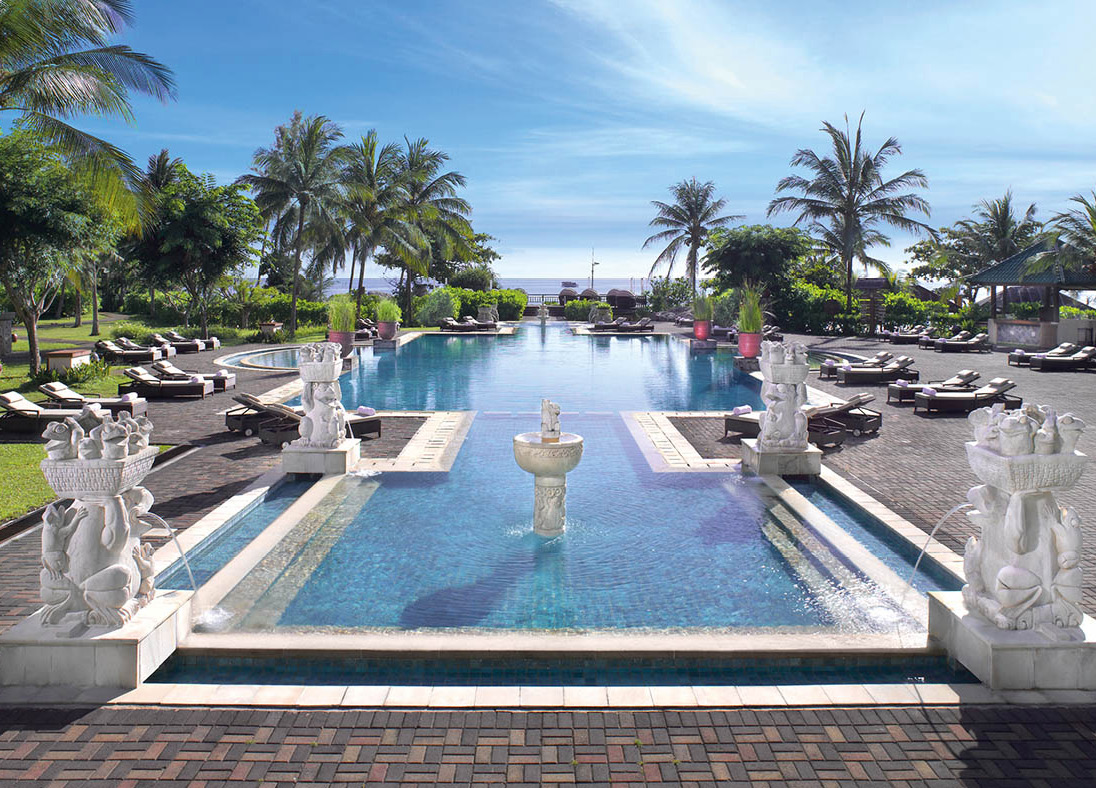
A swanky pool at the Angsana Resort & Spa, Bintan island.
Leonardo
Change has come swiftly to Batam and Bintan islands. Batam % [map] has been developed into a major industrial satellite of Singapore and is popular with weekend visitors from there, who come for its golf courses, beaches, duty-free shopping and seafood. Ferries and hydrofoils ply the waters to and from Singapore almost hourly, from sunrise to sundown.
Bintan ^ [map] is the largest of all the Riau islands, and its northern shore is a string of high-end resorts catering to well-heeled Singaporeans and Indonesians.
The energetic Tanjungpinang port town, situated on the island’s southeastern coast, is a quick 1-hour ferry ride from Singapore, and is also a jumping-off spot to nearby tiny islands and the Lingga archipelago. Attractions include the small but interesting Museum Riau situated on Jalan Brigjen Katamso in the eastern suburbs. You can catch a speedboat to Senggarang, a Chinese village on the far side of the Sungai Riau. Its four shrines include the Banyan Tree temple, a 300-year-old clan house suspended in a giant banyan tree.
Just across from Tanjungpinang is Penyengat, the home base of the Riau sultans, their lavish court and royal city that encompassed nearly 10,000 citizens. A book entitled Bustanul Katibin, the first Malay grammar text, was published on Penyengat in 1857, laying the foundation for Bahasa Indonesia, the lingua franca of the entire country.
Tip
Both Batam and Bintan islands are easily accessible from Singapore. High-speed catamarans can whisk you to the resort islands in under an hour, and numerous travel agents in Singapore sell room-and-ferry packages.
Spanning 14km (9 miles) along the north coast is Pasir Panjang beach, a sprawling complex of deluxe hotels, golf courses, spas and condos and the reason most tourists go to Bintan. A self-contained resort area, every water sport imaginable is available. From here, excursions can be arranged for trekking up Gunung Bintan; enjoying the cool breezes amid lush greenery at Lagoi Park and Reservoir; boating up the Sebung River for an eco-tour of the mangrove forests; interacting with bottlenose dolphins at Dolphin Lodge; and riding an elephant at Bintan Elephant Park.
